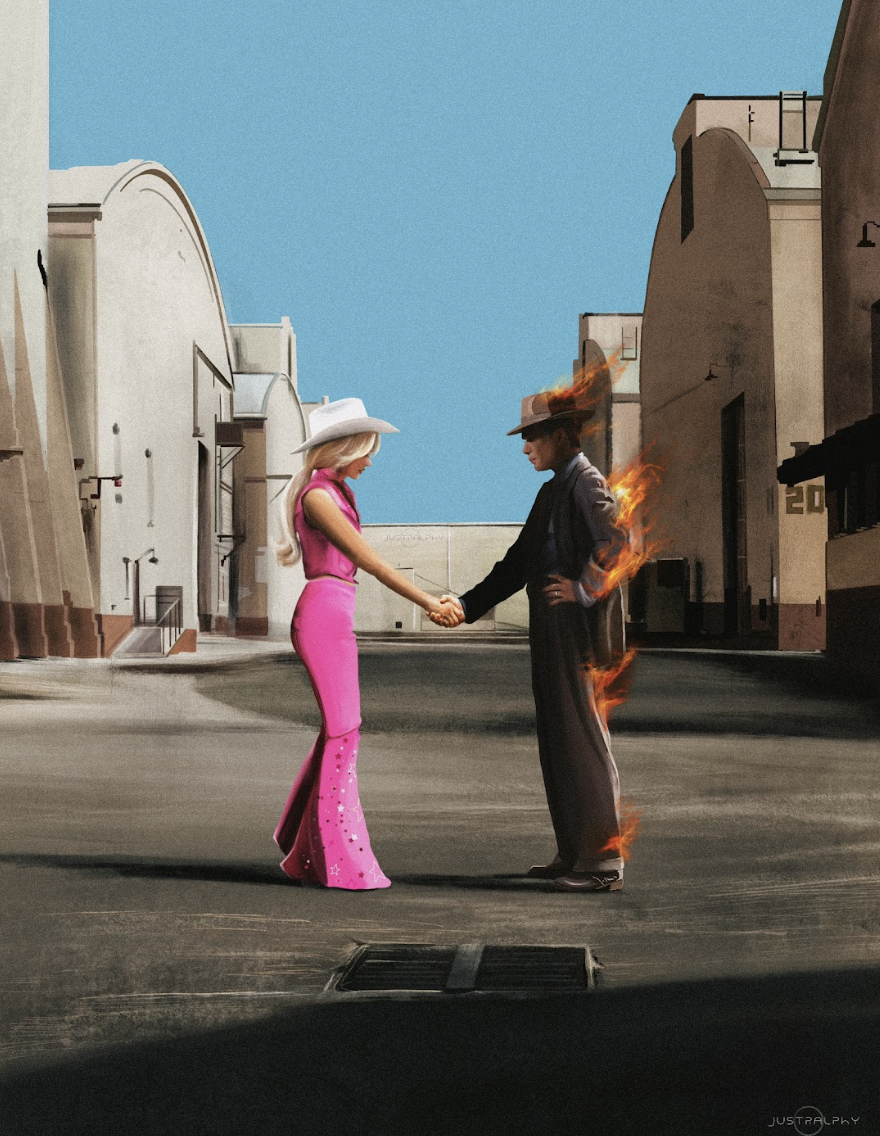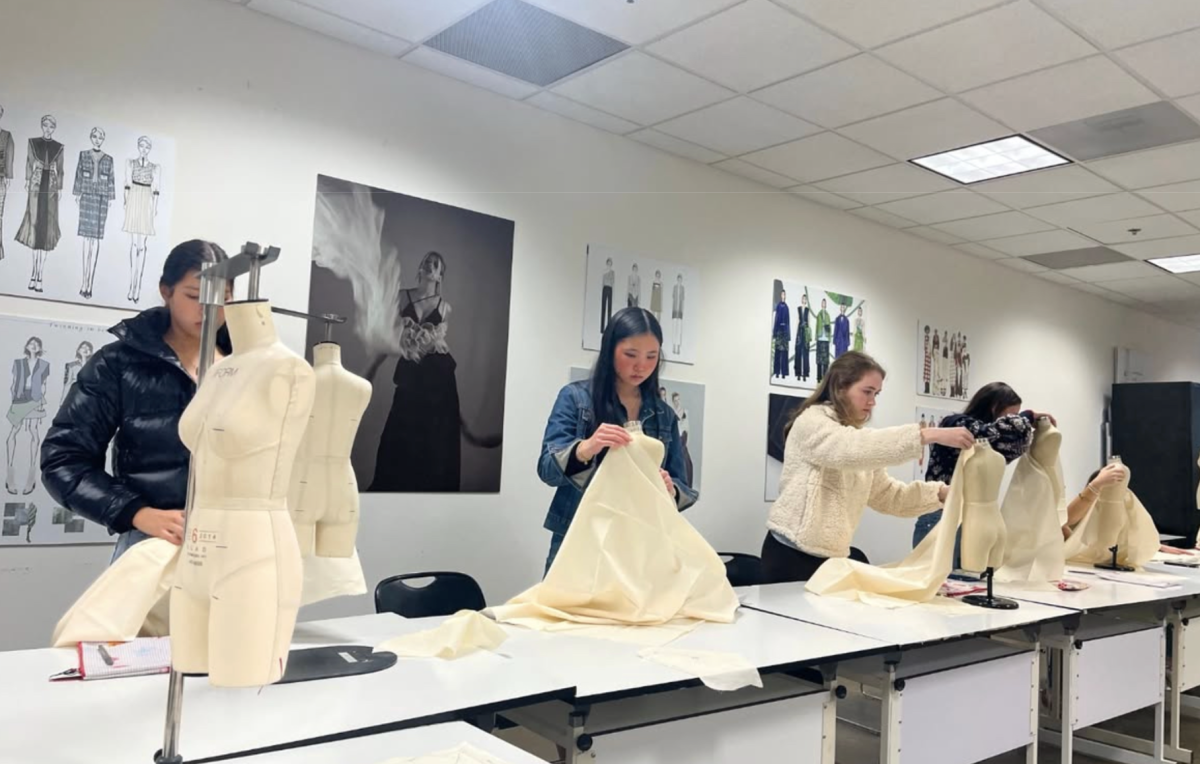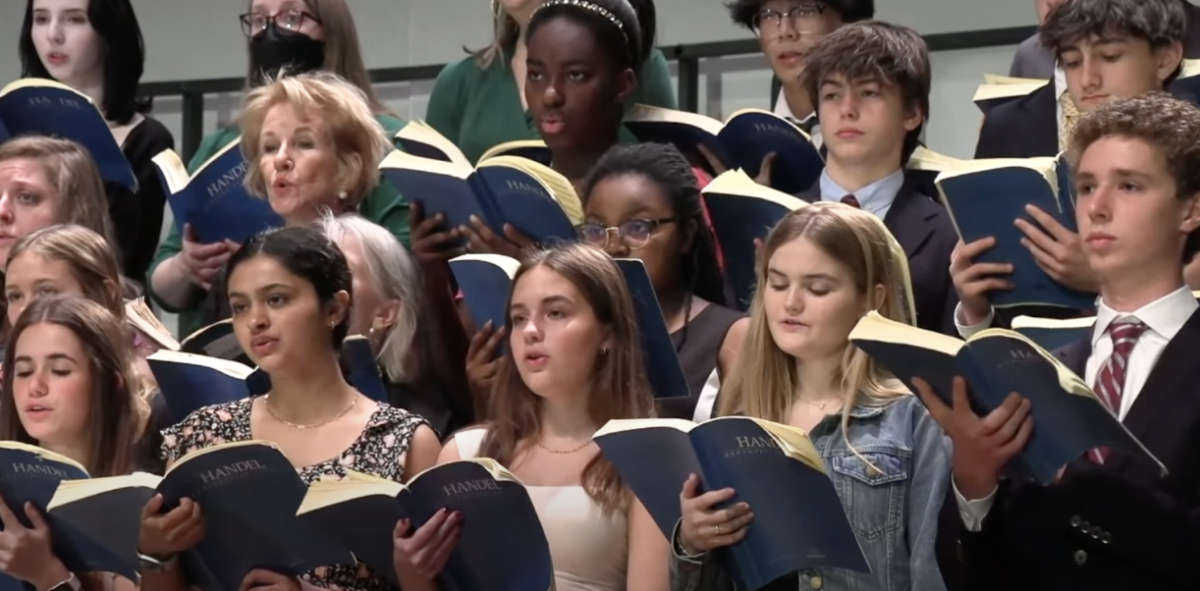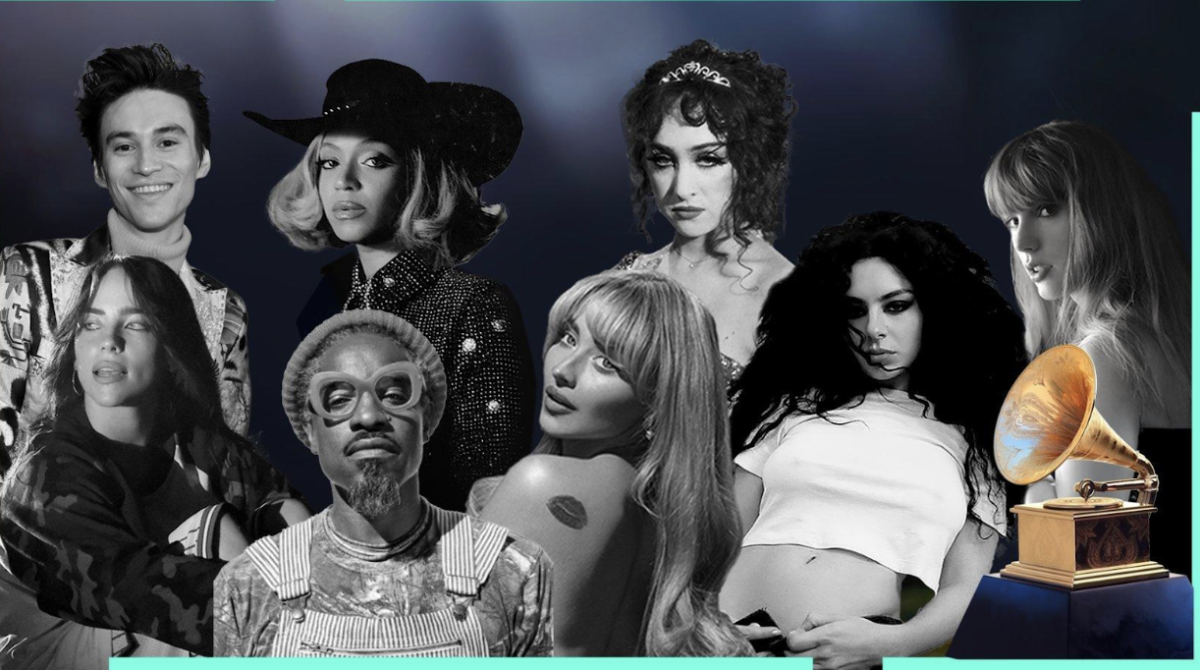Note: Contains spoilers for Barbie and Oppenheimer.
Dolls and destruction. With every sweet summer comes its memorable, memeable movie. With this summer came two much-anticipated blockbusters, with their names fused together in a romantic fan-fiction type of way: Barbenheimer.
Barbie, a fantasy comedy film by Greta Gerwig about the iconic fashion doll, and Oppenheimer, Christopher Nolan’s biographical epic of the atomic bomb’s creator, both released on July 21, 2023, rose to widespread critical acclaim and box office success. The phenomenon of dressing up to attend both movies and watching both in the same day had become an international trend. While most online content comedically highlights the two films’ differences, some online commentators have noted that both films were conceived at husband-and-wife production companies by Oscar-nominated writers/directors, and both films explore themes of existentialism and the complexity of the human psyche.
Even months after the two movies’ releases, Barbenheimer is still a hot topic to hear about in the hallways. So far, it’s evident that the Westminster community is loving the film phenomenon: on social media, pictures can be found of Wildcats posing in front of cinemas, donning pink and/or black attire, and on campus, plenty of Wildcats are gearing up for the upcoming Barbenheimer-themed Homecoming events. Westminster filmgoers have generally enjoyed both films and have found that they’re both uniquely moving and thought-provoking, effectively capturing both the viewer’s attention and the 21st-century zeitgeist.
Barbie has garnered praise for its unabashed, visually spectacular celebration of femininity and its biting message that every woman, while growing up, confronts patriarchy in the workplace or in interpersonal relationships.
“We need more movies about women,” said junior Amber Chang. “Movie companies always say they’re going to make this big movie about women, and then they don’t get a woman to do it, or the movie gets delayed, then canceled…But the Barbie movie is a step in the right direction.”
In Barbie, the titular doll (played by Margot Robbie) is curiously sentient but still a toy and recognizes that she must step away from her role as a product and marketing tool in order to achieve the self-realization she craves. Many women on campus and online found that Barbie resonated with them in that they deal with the everyday struggle of identifying as female in an unwelcome world. The film captures this dynamic in both its stellar soundtrack by a multi-genre ensemble of artists, as well as its stunning cinematography: its exuberant, pink depiction of “Barbie Land” and the sleek, decidedly “masculine” look of modern American cities.
“I liked how bright and colorful [Barbie Land] was, very pink and pretty…it looks like every little girl’s dream and the adults will feel like they’re returning to childhood, even if the message of the movie is much darker” said Sarah Wang, a sophomore.
Indeed, Barbie has received fantastic praise for its set and costume design, establishing an online presence of maximalism, hot pink, and glitter, as well as its attitude of acceptance and joy. The movie also pays homage to Old Hollywood movies like An American in Paris.
“The Kens’ dance sequence, where they’re all wearing black T-shirts on a soundstage, alluding to Singin’ in the Rain, was my favorite part,” said English teacher Clare Costello.
Through the personification and humorous self-effacement of an idealized doll, Gerwig and Mattel effectively used Barbie as a vessel to reach women across all walks of life and to share its greater messages of gender equality and self-actualization.
In a sharp contrasting fashion, Oppenheimer utilizes its epic narrative to highlight the personal nature of innovation and war. Some of the most notable scenes to highlight include the real pyrotechnics, the protagonist’s conversation with Einstein near the end of the film, and the final montage depicting the fiery ruin of the human world in all its cathartic, bitter beauty.
“I really liked the intro scenes, right when the music started,” sophomore Asha Laskar said. “I thought it was very impactful and set up the film really well.”
Asha also stated how she was lucky to see the movie at all because of its restricted rating (her parents accompanied her to watch the film.) Many underclassmen who have planned to see Oppenheimer and other movies of the like have been denied because of their age. Although Oppenheimer was criticized for “excessive” violence and nudity that earned it an R-rating, the film also received widespread praise for its skillful editing, mechanical effects, and overall visual splendor.
“Christopher Nolan is a great director. My favorite parts were the special effects,” said sophomore Lahiri Nooka.
Christopher Nolan, director of Oppenheimer, said himself that the intentional beauty of the ending montage was to bring contrast to the personal aspects of the movie: the unfair way scientists and creators are abused for their work and the inherent human love for destruction.
Mary Cumming, an English and Creative Writing teacher, said that the movie left her passionate and furious about the disregard for science and scientists.
“It’s interesting, the way we have a history of using scientists for what they can give us and then cut them out. My favorite scene was when Oppenheimer was speaking to Einstein just about how afraid he was that the thing he created was going to destroy the world.”
Still, such is the effect art can have on people. Society can honor the histories of moving past misogyny and war and look toward a bright Barbie Land-like future. When we step out of the dim cinema lighting into the parking lot, we realize we’ve changed in the time between the title screen and the credits–- that we’ve learned to feel more and see more, in both monochrome and color.





